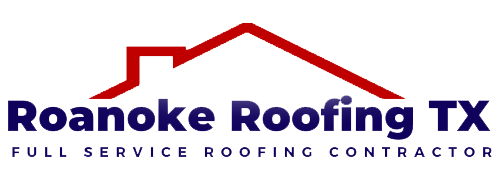When the storm clouds gather over DFW, it’s not just raindrops that fall – it’s also a swarm of roofers knocking at your door. Yard signs sprout like mushrooms, and construction projects seem to pop up overnight. But before you commit to the first contractor who shows up, it’s crucial to do your homework. Otherwise, you might unwittingly find yourself in cahoots with a storm chaser.
Your roof is a hefty investment in your home’s future. Whether it’s an insurance job or you’re footing the bill yourself, you deserve top-notch workmanship from a trusted local roofing company. Otherwise, you could be left picking up the pieces – and the bill – down the line.
Sadly, a significant portion of our business involves rectifying shoddy roofing jobs done by other companies. These jobs often result in homeowners facing roofing issues mere years after installation. To add insult to injury, the original roofers exploit warranty loopholes or vanish back to their home states, leaving you high and dry.
These roofers thrive on instilling fear, convincing homeowners that their roofs need immediate replacement and that filing an insurance claim is the only solution. Their aim? To secure as many jobs as possible, outsource the work, and vanish into the ether.
We call them storm chasers in the Roofing Industry.
We’re here to arm you with the knowledge to identify these storm chasers and avoid falling into their traps.
What Exactly Are Storm Chasers? Storm chasers are a breed of roofing salespeople who chase after major storms from state to state. They descend upon the hardest-hit neighborhoods, offering free inspections door-to-door and pressuring homeowners to file insurance claims on the spot.
But here’s the catch – they lack a local presence. Often inexperienced and lacking a solid team, they rely on subcontractors who may not be certified or skilled in roofing.
The outcome? Poorly installed roofs that quickly develop issues. And when those issues arise, the roofing company is nowhere to be found.
That’s why, even in insurance cases, choosing the right roofer is critical. Otherwise, you might find yourself footing the bill for someone else’s mistakes.
So, how do you spot these storm chasers?
They canvass neighborhoods uninvited. If a roofer is resorting to door-to-door solicitation, it’s a clear sign they lack sufficient business or reputation to attract clients through other means.
- They tout a “lifetime” workmanship warranty. Proceed with caution if a company promises a lifetime warranty. No business can guarantee longevity with absolute certainty.
- They insist on signing agreements before inspecting the roof. Watch out for pre-inspection paperwork – it could lock you into an agreement without your knowledge.
- They pressure you to file insurance claims immediately. Remember, you have time to assess your options. Don’t succumb to hasty decisions pushed by transient roofers.
- Their crew lacks identifiable company gear. Mismatched attire often indicates subcontracted labor.
- Their license plates hail from distant states. A roofer’s out-of-state plates are a telltale sign they lack local ties.
- They demand to see insurance paperwork before providing a quote. While insurance details aid in estimation, requiring them upfront suggests ulterior motives.
- They offer to cover your deductible. Beware of illegal inducements – these costs might reappear in your roofing quote.
Each of these warning signs should prompt a pause and a thorough investigation before committing to any contractor.
7 Key Considerations When Selecting a Roofing Contractor Don’t just take a company’s word for it – verify their claims. Ensure legitimacy by checking with the Better Business Bureau or Secretary of State website.
Here are seven critical factors to evaluate:
- Years in business: A warranty is only as good as the company behind it. Choose a roofer with a proven track record.
- Locality: Opt for a local contractor to ensure prompt assistance if issues arise post-installation.
- Subcontractor usage: While common, subcontracting can compromise quality. Confirm the expertise of all involved workers.
- Certification: Ensure the entire crew, not just the owner, holds relevant certifications.
- Consistent product usage: Adhere to manufacturer guidelines for warranty coverage by using compatible roofing components.
- Insurance coverage: Demand proof of worker’s compensation and liability insurance for all workers involved.
- Estimate scrutiny: Look beyond the numbers to assess the scope of work and quality of materials included.
Why Vet Your Roofing Contractor? Your roof is a long-term investment, intended to safeguard your home for decades. To ensure its longevity, thorough research is non-negotiable. Roofing is a complex process, and not all contractors possess the necessary expertise.
At RRTX, we operate differently. Our aim is to empower you with knowledge while delivering unparalleled workmanship.
When you engage with us, you’ll receive more than a quote – you’ll gain insight into the roofing process. We pride ourselves on transparency, education, and customer satisfaction.
Furthermore, we don’t subcontract our work. Our seasoned crew, based in DFW is dedicated to providing top-tier service from start to finish.
Looking to upgrade your roof? Contact Us, and embark on a journey toward roofing excellence.


0 Comments